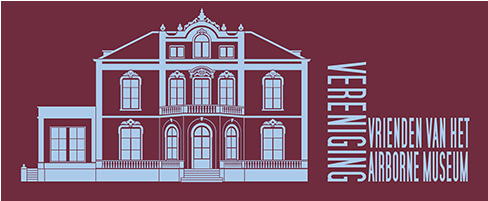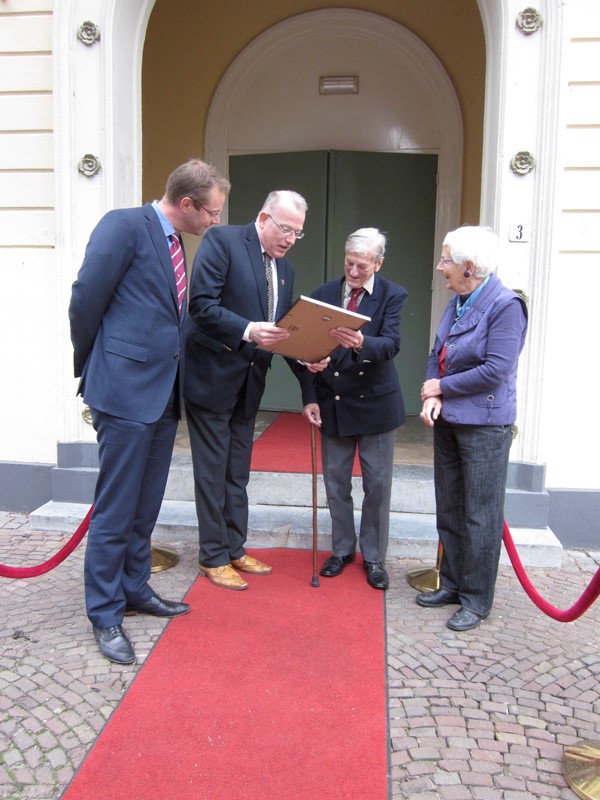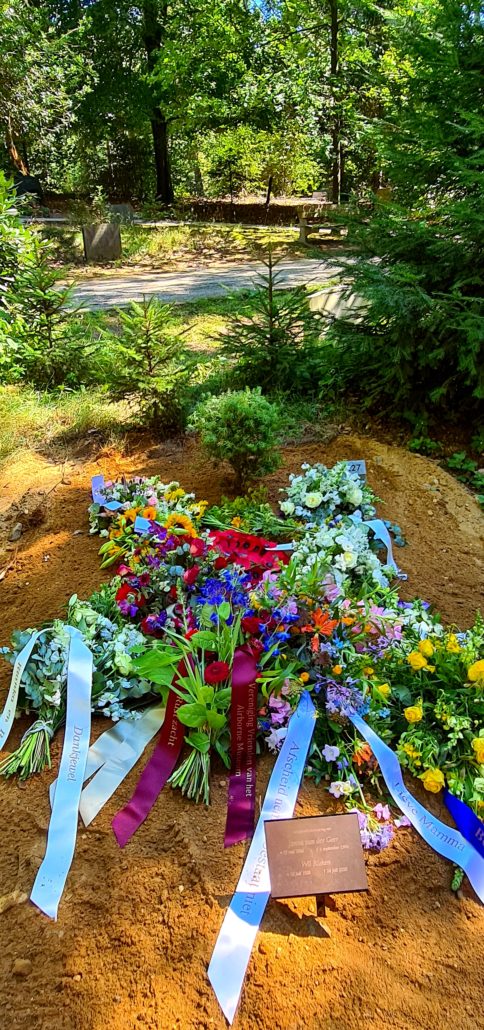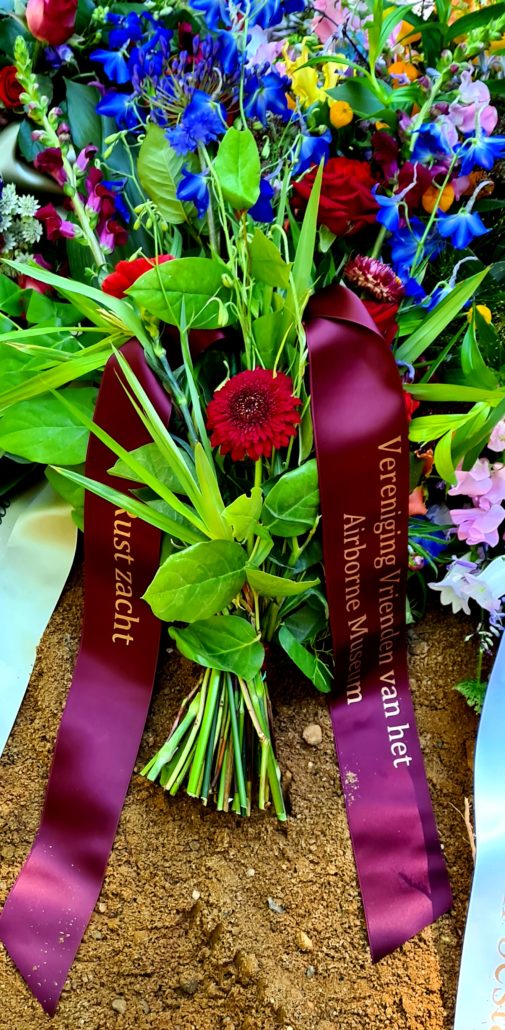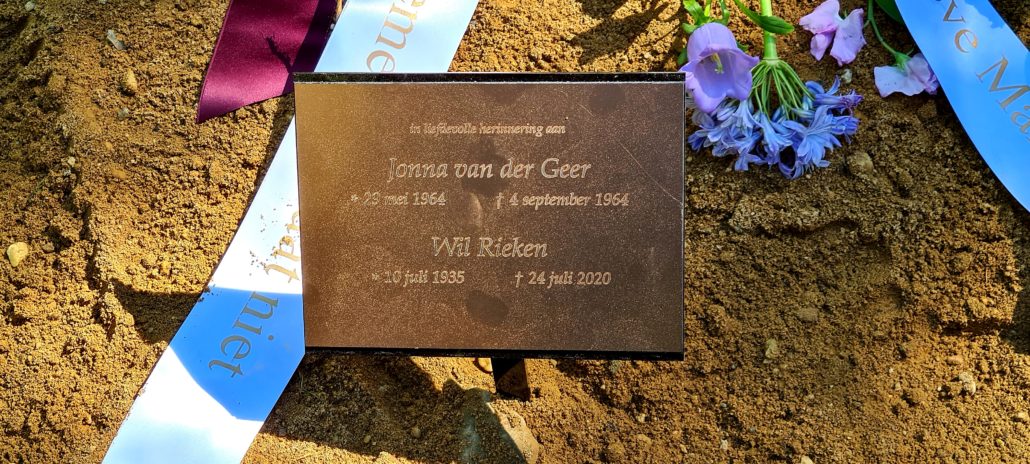(Text version for search-engines)
Colonel John Llewellyn Waddy OBE
Commanded a company of 156 Parachute Battalion at Arnhem Recommended the use of helicopters for swift movement of troops 20 years ahead of its time
COLONEL JOHN WADDY, who died on Sunday, 27th September 2020 aged 100 years, was a company commander in the 156 Parachute Battalion at the Battle of Arnhem where he was badly wounded in September 1944, and 31 years later was senior military adviser to the film A Bridge Too Far.
Hired for six months to ensure that the action, uniforms and weapons looked as authentic as possible, he was so appalled by the unmilitary way the 50 young actors with minor parts moved as a group he gave them a course of special training. Their language deteriorated though the drill improved. Waddy could make few changes to the script, which placed far too much emphasis on the Americans in the battle. Richard Attenborough, the director, explained that the project was American financed for an American audience, which was still bruised by the defeat in Vietnam and would be little enthused by a movie about another defeat. It was also unpopular with some British veterans. One British medical officer, whose gallant part inColonel John Waddy OBE, as military advisor on the set of A Bridge Too Far with the director Richard Attenborough.
the negotiation over the removal of the wounded was transferred to a Dutch doctor played by Laurence Olivier, suggested that the film should be renamed A Star Too Many. Joseph Levine, the producer, simply declared that he made films for money, not history. Nevertheless, Attenborough showed his appreciation by giving the name Waddy to the driver of General Horrocks (Edward Fox) at the beginning of the film and placing him as an extra in a later scene with General Urquhart (Sean Connery).
Looking back on his six months as adviser Waddy considered Lord Attenborough had “all the qualities of a great leader”. Waddy had frequent arguments with the producers – particularly when the entire fleet of aircraft were painted the wrong colour – and became good friends with Edward Fox, Laurence Olivier (the Dutch doctor) and Michael Caine (Colonel Joe Vandeleur) who all mucked in with the crew. On the other hand, Sean Connery seemed pre-occupied and never said a word. Waddy remembered Robert Redford (Major Julian Cook) repeatedly misfiring his gun.
John Llewellyn Waddy was born near Taunton on 17th June 1920 into an Anglo-Irish military family. He was the last of seven generations to hold a commission in the British Army which had seen action in Ireland, India, the Crimea, Africa and New Zealand, as well as the two world wars. He went to Wellington College and was commissioned into the Somerset Light Infantry which sent him to do tedious service in central India and on the North West Frontier before volunteering to join the 151 Parachute Battalion in India in October 1941, which in December 1942 was re-named the 156.
151 Battalion stick of 10, jumping from the Valencia, Delhi, 1941
Parachuting was in its infancy. There were no reserve parachutes or helmets in use at that time. On his first exercise, whilst jumping last in a stick of 10 men through the hole in the floor of a pre-war Valencia biplane, he fractured his skull
No. 3 Squad 2nd Airlanding School Course, 6th December, 1941. New Delhi, India. 4th from left is Lt. Mickey Gibbs, later to be taken prisoner at Arnhem. John Waddy is on the far right. At the rear on the right is L/Cpl. Churchward who on the first course was acting as Assistant Instructor after just 5 jumps.
rendering him unconscious when his head hit the piece of metal at the end of a static line. En route to the hospital in Delhi he woke up in the ambulance to be told that the man in the bunk above him had been killed when his chute had failed to open. John spent a month in hospital and a further two months recovering.
Later in England, whilst parachuting, he dropped his shovel, narrowly missing a soldier who shouted as they landed together “You dozy f…..”, then realised he was addressing an officer and saluted. Waddy apologised.
It was the second day of the battle when Waddy flew to Arnhem. A full set of the plans for Operation Market Garden had been captured by the Germans the day before so they were well prepared. “I stood by the side of the open door of my aircraft as we travelled towards our drop zone near Arnhem”, said Waddy. There were 36 Dakota aircraft in the serial carrying the 156 Parachute Battalion.
Waddy continued: “Many of the American pilots and crew of these aircraft were green as our Battalion had found to its cost on a previous exercise when they dropped us miles from our DZ. Bearing this in mind, Shan Hackett had suggested that I closely monitor our route which is why I was looking out of the open door. The flak was becoming more intense as we travelled across the Dutch countryside when the aircraft to my right was hit on the port wing and caught fire; it began a steep dive of around 45 degrees. When it hit the ground, it exploded into a fireball. I looked at my men who were seated each side of the aircraft who, in the din, had not noticed what had just happened – I said nothing.”
IWM EA74538
Dakotas flying in ‘vic of vees’ formation over Holland, September 1944
IWM BU1163
Parachutists of the 1st Parachute Brigade at Arnhem, 17th September 1944
The day after landing on the outskirts of the Dutch town of Arnhem, Waddy, Commander of B Company, was advancing through a wooded area under heavy fire from elements of the 9th SS Panzer Division, when he found the bodies of a section of A Company in a clearing. He had led his company into the attack within 15 yards of the Dreijenseweg, the German blocking line, where a self-propelled double-barrelled enemy flak gun was firing bursts at his platoon on the left flank, when the man next to him was hit in the forehead by a sniper up a tree. Firing his Colt .45 several times, Waddy missed him and was hit in return. When another bullet landed near his hand, he pretended to be dead until he was rescued by the 6’4” Rhodesian Ben Diedericks, who burst out of some nearby bushes and yelled “Let’s get you out of here Sir”. He was then taken to the Hotel Tafelberg at Oosterbeek, where doctors were operating on the billiard table.
For five days Waddy watched a stream of casualties brought in as the battle raged outside and bullets smacked into the walls of the room. A mortar bomb scored a direct hit, killing six other patients and wounding him again. Several times Germans swept in to be driven out again by the Paras before finally establishing themselves. On the last day, a heavy bombardment by Horrocks’s XXX Corps started a fire. Waddy was wounded again and dragged out to a pile of 30 bodies in the back garden. When a sergeant carried him to a jeep, he thought
Men from C Company, 156 Parachute Battalion. Lieutenant St Aubyn’s escort from C Company – with Private Dugdale, far left and Lance Corporal Rosenberg at the back of the group, holding a pistol. The picture was taken by Sergeant Mike Lewis, Army Film Unit, in one of the Hartenstein’s roofless service buildings, originally the Orangery and situated close to 4th Brigade’s HQ. A party of the 4th Para Squadron commanded by Captain Brown witnessed the picture being taken mid-morning Friday 22nd September. Brown said: “My Sappers gave them a few boos and cat calls as an indication of their disapproval.” In 2004 Robert Voskuil, from the Society of Friends of the Airborne Museum, established the location of this photograph using enhanced aerial photography taken in 1945.
reinforcements had arrived at last, but they were captured. Just 200 yards from the Tafelberg, the remnants of Waddy’s battalion had fiercely defended the north east sector of the British perimeter until the 27 survivors were withdrawn over the Rhine.
From the Tafelberg he was taken to Apeldoorn hospital, where he heard two German doctors discussing amputating his foot. A German nurse then pulled out a two-inch mortar splinter in a moment of excruciating pain. Recovering after six weeks, Waddy was put on a hospital train for Stalag Luft VIIA at Moosburg, Bavaria. There he was sentenced to five days in solitary confinement for slowly walking with his hands in his pockets past the office of the Kommandant (whom he later recalled as strongly resembling the senior German officer in the television comedy ’Allo ’Allo!).
A month after being flown home Waddy married Ann Davies, whom he had met earlier in 1944 in Melton Mowbray. The 156 had been billeted in the town and Ann worked at the Remount Depot. They shared a love of horses and had ridden out together over the Leicestershire countryside.
On being posted to Palestine in September 1945, Waddy was seriously wounded again in July 1947. He was shot in the back while drinking in a bar with a fellow officer who was killed. The surgical operation which saved him had been devised by Captain John Buck, who had been the 156 Battalion’s Medical Officer at Arnhem.
Waddy had a spell in Greece which ended when he broke his jaw running downhill. But there was still plenty of work to be done defending the Empire. Waddy was sent to staff college, followed by time in Egypt and Libya to check the bubbling terrorism, and then went to Malaya in 1952 with his old regiment, the Somerset Light Infantry, for endless patrolling deep in the jungle.
John Waddy cooling off after a day’s shooting in India 1941
Parachute Brigade in Lebanon,
Waddy returned to the Parachute Regiment and next jumped in the Arctic as an instructor with the Canadian air training centre, where he enjoyed going on Arctic exercises. Becoming second in command of 16th he spent six months, on an hour’s notice, planning a full
airborne assault on Kuwait airport in case the Iraqis invaded.
Waddy then set up (without permission) the Parachute Regiment Battle School in the Brecon Beacons, which remains in use today.
In late 1964, Waddy was promoted to Colonel and took up a new post as Colonel Commandant of the SAS Regiment, which later evolved into Director SAS. Waddy was an early encumbent of this post and is credited in doing much to develop new roles for the SAS in the post- Colonial war period.
Waddy’s later service included acting as British liaison officer with the Americans in Washington. But he found the latter job so pointless that he had it scrapped and spent a year with the American Army at Fort Benning, Georgia, instead advising on fighting behind enemy lines. This led to him being posted as a defence adviser at the British Embassy in Saigon, in 1970, where his days were filled with the task of going out on helicopter patrols and his evenings with getting home to change for cocktail parties. On returning home in 1972, however, he found the MOD was so concerned about Northern Ireland that his foresight about co-ordinated helicopter operations was ignored for 20 years.
For 15 years, after retiring from the Army in 1974, Waddy worked with Westland Helicopters, advising marketing teams on the nature of future operations.
Colonel John Waddy OBE, photographed at the end of his tour of duty serving as Colonel Commandant of the SAS Regiment.
In 1982 Waddy started leading staff college tours around Arnhem, pointing out the many mistakes in the week-long planning beforehand and then in the execution of the operation. Later he did the same for parties of Dutch and British children.
From the mid-eighties Waddy was instrumental in establishing 156 Battalion reunions each autumn in Melton Mowbray where his battalion was billeted in 1944. Surprisingly, these reunions still flourish today, attended by the families of the veterans, with the numbers more recently increasing year on year.
Waddy was the last surviving member of his battalion to fight at Arnhem. His battalion suffered the highest casualty rate – 75% – with over 100 men killed, Only 37 men, some escaping on Operation Pegasus, would eventually return to their base in Melton Mowbray. The Battalion was disbanded in October 1944.
In 1999 Waddy wrote the book A Tour of the Arnhem Battlefields and in 2009 he helped immeasurably with the production of the book From Delhi to Arnhem, which covers the history of the 151/156 Parachute Battalion and the wider battle at Arnhem. He declined to have his name included on the cover and it was a mark of the man that he shunned any credit for this work.
Over the years, a mutually strong bond and respect developed between Waddy and the Dutch to such an extent that he was their most well-known and much-loved veteran. He said how much he enjoyed the friendship of the Dutch and how Arnhem was his second home. Waddy took it all in his stride but admitted to being shaken when a female major asked him to sign a copy of his battlefield guide, then kissed him on the cheek.
On 17th June this year John Waddy celebrated his 100th birthday, held outside and attended by Lieutenant General Sir John Lorimer, KCB, DSO, MBE, the Colonel Commandant of the Parachute Regiment and the Dutch Military Attaché Lieutenant Colonel Rob Arts who presented Waddy with The Dutch Liberation Medal.
All this was made possible by Waddy’s super-carer, Colleen De Villiers, as on the day he had refused to participate saying he would lock himself in his room if it went ahead. In the end, with the help of Jane, his niece, Colleen succeeded in persuading him otherwise and the day was saved.
Right up until the end, the Colonel would have his gin and onions at lunchtime, a passion developed in India where the gin was undrinkable. One of his most memorable lines was “… my men are like my spaniels, brilliant in the field but a bloody nuisance out of it!”.
With assistance from David Twiston-Davies, (now deceased)
156 Parachute Battalion Association 29th September 2020
Col. J Waddy’s 151 Bn. parachute flash
Richard Watt
Colonel John Waddy celebrating his 100th birthday
Written by John O’Reilly Design & Layout by Will Stark www.156para.co.uk
